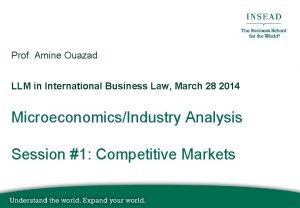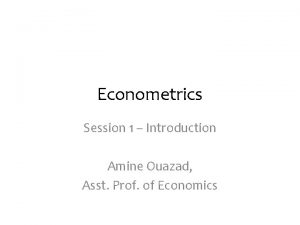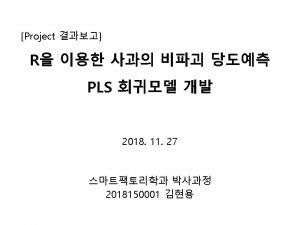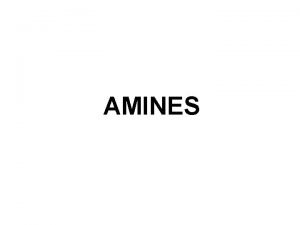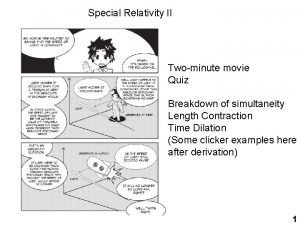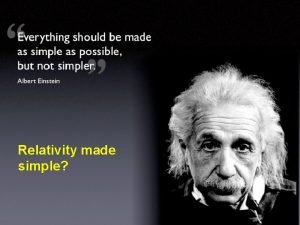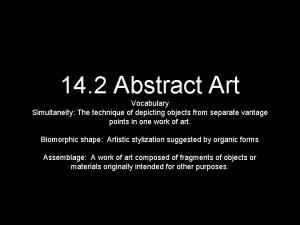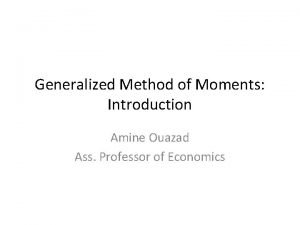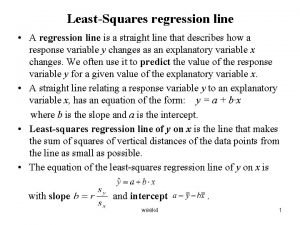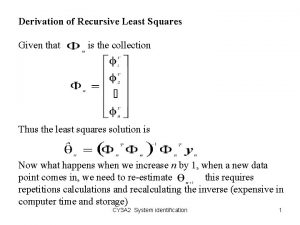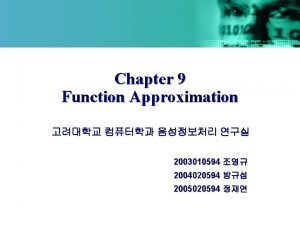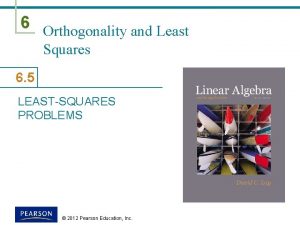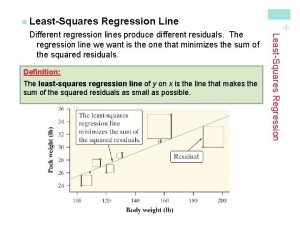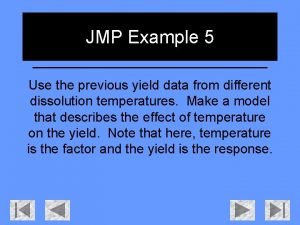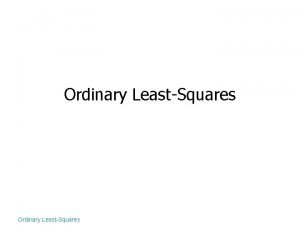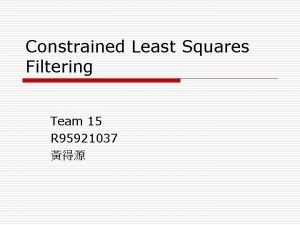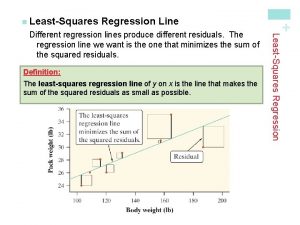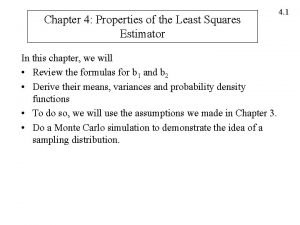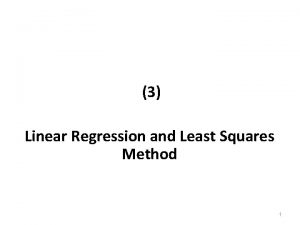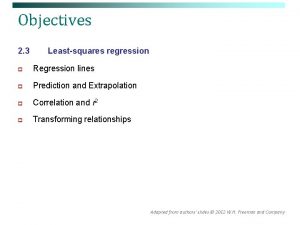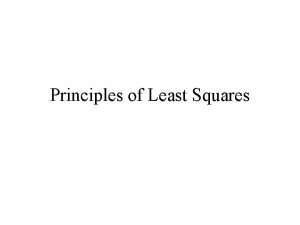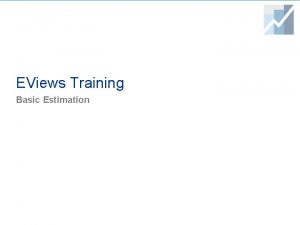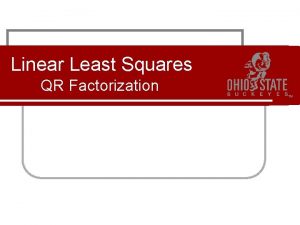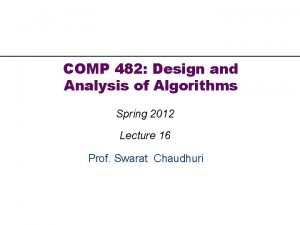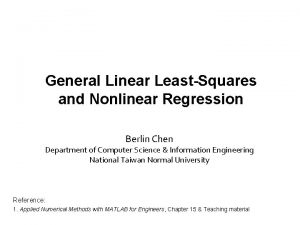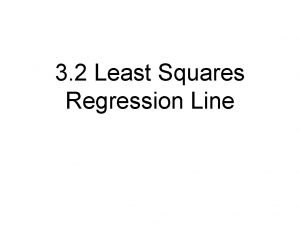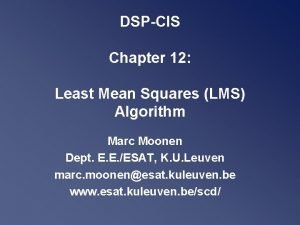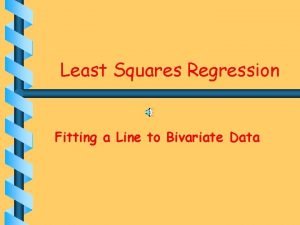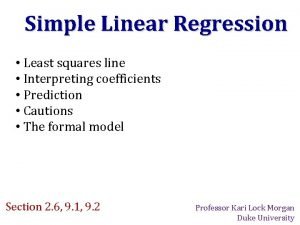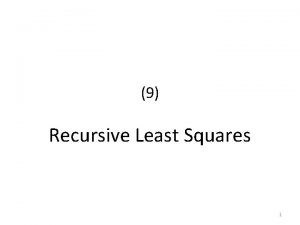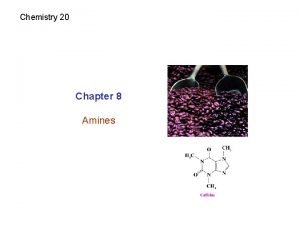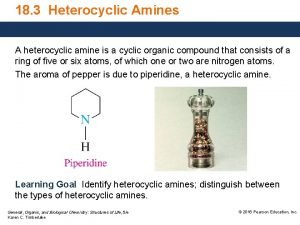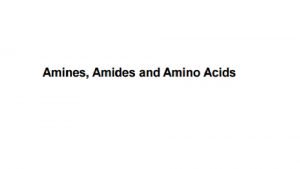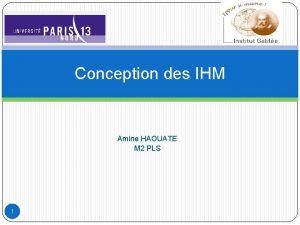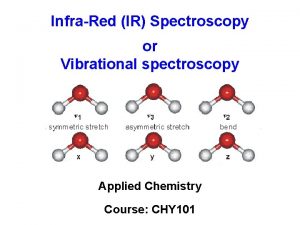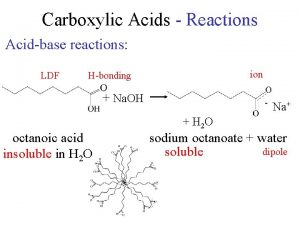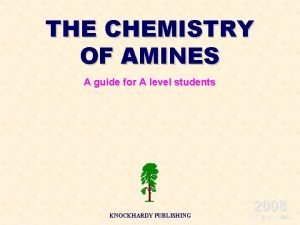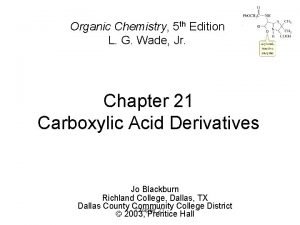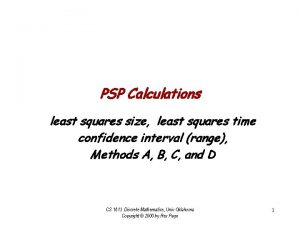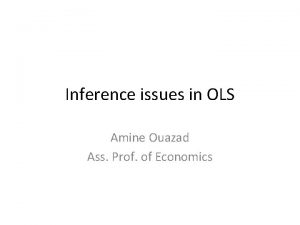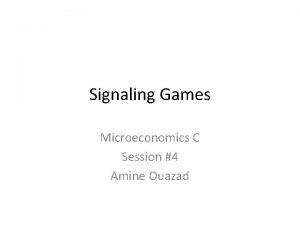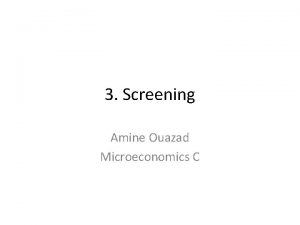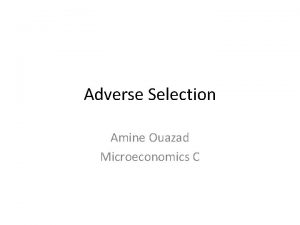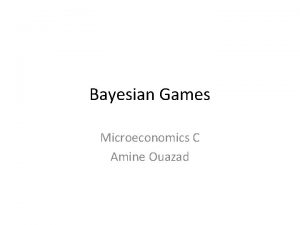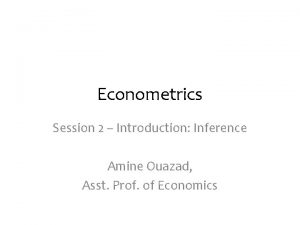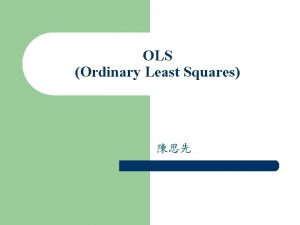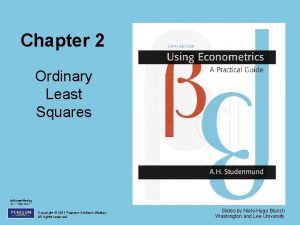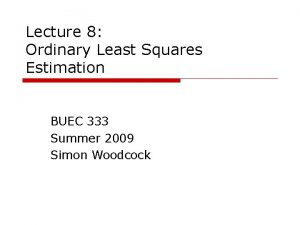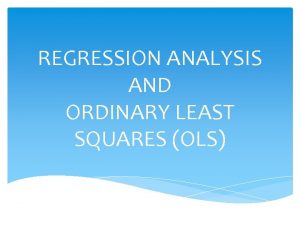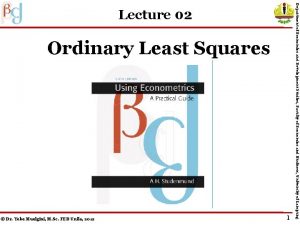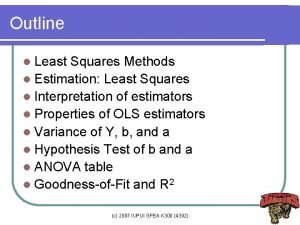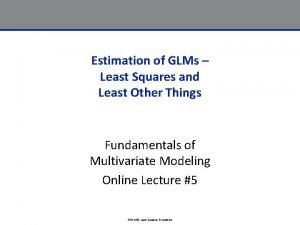Simultaneity Issues in Ordinary Least Squares Amine Ouazad
































![Rank condition rank[Pj*] = Mj • This condition imposes a restriction on the submatrix Rank condition rank[Pj*] = Mj • This condition imposes a restriction on the submatrix](https://slidetodoc.com/presentation_image_h/83d1a55970c0abbd8de673cb55f0d225/image-33.jpg)



















- Slides: 52

Simultaneity Issues in Ordinary Least Squares Amine Ouazad Ass. Prof. of Economics

Recap from last sessions • OLS is consistent under the linearity assumptions, the full rank assumption, and the exogeneity of the covariates assumption. • The exogeneity of the covariates (A 3) is violated whenever: 1. 2. 3. • • • There is an omitted variable in the residual which is correlated with the covariates. (last session) There is measurement error. (last session) There is a reverse causality or simultaneity problem (this session). These three issues cause identification problems: even if sample size is infinite, the estimator does not come arbitrarily close to the true value. The OLS estimator is inconsistent. The OLS estimator is biased.

Outline 1. Supply/demand estimation 2. Simultaneous Equation Model (X Rated) 3. Bruce Sacerdote, Peer effects with random assignment: Results for Dartmouth roommates, Quarterly Journal of Economics, 2001.

SUPPLY AND DEMAND ESTIMATION



Source: BP Statistical Review, 2009. Forecastchart. com


Supply/demand estimation The problem • pt : price at time t. • qt : quantity at time t. • Specification: qt = a + b pt + e. • The OLS regression of qt on pt does not satisfy A 3 because there is a correlation between price changes and the unobservables e.

Full model • qt, pt: endogenous variables. • e: supply shock, u: demand shock. Market equilibrium: Notice the effect of supply and demand shocks on price and quantity. Hence Cov(pt, et) is non zero and the regression of quantity on prices does not yield a consistent estimator of either demand or supply.

Exogenous/Endogenous • Greek: ενδογενής, meaning "proceeding from within" ("ενδο"=inside "-γενής"=coming from), the complement of exogenous (Greek: εξωγενής exo, "έξω"= outside) "proceeding from outside". • Definition of exogenous/endogenous depends on the model. For instance, in the previous model, if

Structural, Identifiable Parameters • Structural parameters: (a, b, c, d, Var(e), Var(u)) • Identifiable parameters: – These parameters are the mean of pt, the mean of qt, the variance of pt, the variance of qt. • Hence there are 4 identifiable parameters, and 6 structural parameters…. The model is not identified.

Observational equivalence, example • With Cov(et, ut) = 0, Var(et) = 1, Var(ut) =1. • Then, the following demand supply schedule gives the same distributions of prices, quantities, and correlation between price and quantity: • How did I find this? ?

Solving the simultaneity problem

Intuition • If you have a variable that affects demand without affecting supply, then it is possible to identify the supply curve. • If you have a variable that affects supply without affecting demand, then it is possible to identify the demand curve. • Here we have this: – temperature affects only supply ! – We are able to estimate the demand curve. How ?

Consider the following: • Prove that this covariance is equal to b. – Under what assumption? • z is called a supply shifter. – A supply shifter identifies demand. • Question: what if you had one variable that affects demand without affecting supply?

Stata application ivreg quantity (price = temperature) • This regression estimates the demand curve, since temperature affects only supply. • This is called an instrumental variable regression, to be seen later in econometrics A.

(Reference: William Greene, Simultaneous Equations Model) SIMULTANEOUS EQUATIONS

Structural form of the model • • yt 1, yt. M are the endogenous variables xt 1, xt. K are the exogenous variables. et 1, …, et. M are the structural residuals/shocks/unobservables. t: time periods. In matrix form:

Reduced form of the model •

Exercise • Write the structural form of the model for the oil example. • Hints: – There are 2 equations. – 2 Endogenous variables: pt qt. – 1 Exogenous variable: the constant. • Write the reduced form model using the previous formula. Do we find the same solution?

Matrix form notation: Structural model • Y : Tx. M matrix. T rows, M columns. – M = 2 in the oil example. • X: Tx. K matrix. – K = 1 in the oil example. • E : Tx. M vector. • Exogeneity E(E|X) = 0 and E(E’E|X) = S.

Matrix form notation: Reduced form model • P : the matrix of reduced form parameters. (Kx. M matrix). • V : the vector of residuals, with variancecovariance matrix W. The var-cov matrix has size M.

Identification of Reduced Form parameters • Parameters in the structural form model: – M*M + K*M + ½ M(M+1) – G matrix, B matrix, S matrix. • Parameters in the reduced form model: – K*M + ½ M(M+1) – P matrix, W matrix. • Aie ! M*M parameters ‘too many’ !

Solutions? 1. Normalizations: – make the coefficient of each independent variable equal to 1. The number of excess parameters is then M(M-1). 2. Identities & Restrictions: – Pin down relationships between parameters. 3. Exclusions: – Political events have an effect on supply, but not on world demand. 4. Restrictions on the variance covariance matrix: – Assume 0 correlation between disturbances in the reduced form model.

Notations for equation j • Considering equation j in isolation… • We set the coefficient on yj equal to 1. • We are going to exclude endogenous variables (exactly Mj* variables) and exclude exogenous variables (Kj* variables).




Equation j

Finding the structural parameters Pj*gj=pj* • This equation gives the structural parameters of equation j. It has Kj* equations (the rows of Pj*) and Mj unknowns (the coefficients of the structural parameters).

Order condition Kj* greater or equal than Mj • The number of exogenous variables excluded in equation j must be at least as large as the number of endogenous variables included in equation j. • Relationship with agricultural product exercise? ?
![Rank condition rankPj Mj This condition imposes a restriction on the submatrix Rank condition rank[Pj*] = Mj • This condition imposes a restriction on the submatrix](https://slidetodoc.com/presentation_image_h/83d1a55970c0abbd8de673cb55f0d225/image-33.jpg)
Rank condition rank[Pj*] = Mj • This condition imposes a restriction on the submatrix of the reduced-form coefficient matrix.

Deducing the coefficients of the exogenous variables • This equation gives the coefficients of the exogenous covariates of equation j as a function of known quantities.

Take Away • With simultaneous equations, only the reduced-form model is typically identified in OLS. – You cannot interpret the results of an OLS of the structural model (where endogenous variables are in the covariates). • However, by making suitable assumptions on the exclusion of exogenous variables, you can identify the model.

Take Away • 4 steps: 1. Estimate the reduced form model. 2. Make the necessary exclusion restrictions. 3. Write the structural parameters as a function of the reduced form parameters. 4. Solve the system of equations.

SOCIAL INTERACTIONS: SACERDOTE QJE 2001



The question • What is the impact of a roommate’s characteristic and behavior on your GPA/behavior ? – Characteristic: SAT score (before university), gender, age, any x that is not changing over time. – Behavior: any variable that is a choice, such as choice of major, achievement.

The issues • Regressing my GPA on the GPA of my roommate has a number of problems… – First, the GPA of my roommate is also determined by my GPA: simultaneity bias. (A 3) – Second, if roommates are not randomly allocated, and if, for instance, having a male roommate is correlated with having a drinking roommate, then: omitted variable bias. (A 3) – Third, there are some common shocks that affect both me and my roommate at the same time: correlation of the error terms. (A 4) – Fourth, the effect of my roommate may depend on my characteristics, and also on his other characteristics: non linearity. (A 1)


The structural model • Academic ability, Measurement error, Grade point average of the roommate, residual. • Assumptions A 1, A 2 are maintained. The exogeneity of the GPA of the other roommate (A 3) is violated.

The reduced form model • Notice that right-hand side variables are purely exogenous. • Identification problem is given pi_0, pi_1, and pi_2, can we “get” the structural parameters? Without any more constraint, no. • Notice that there will be correlation of the residuals across individuals.

Identification problem • In the reduced form, assuming A 1, A 2, A 3, the OLS is consistent. A 4 is violated (more on this in the next session). – regress gpa_roommate characteristics_roommate gives consistent and unbiased estimates of the effects. • (To correct for A 4, add option cluster(room) if room is a variable indicating the room number).

Randomization • Individuals are randomized conditionally on their stated preferences. Violation of A 3? Not if the preferences are present as covariates. – Conditional randomization, E(e|X) = 0. • Method of randomization?


Results

Checking Linearity (A 1)


Take Away from this session • Spot Reverse Causality issues in papers! – Sometimes mild, sometimes very severe (demand/supply, social interactions) • You can solve the problem by instrumenting the endogenous variable with a variable that affects the variable without affecting the outcome (a demand shifter for supply, a supply shifter for demand).

OLS: Three identification issues 1. Measurement error 2. Omitted variable bias 3. Reverse causality/Simultaneity
 Amine ouazad
Amine ouazad Amine ouazad
Amine ouazad Ordinary least squares
Ordinary least squares Amine
Amine Simultaneity
Simultaneity Simultaneity
Simultaneity Simultaneity service
Simultaneity service Who developed cubism
Who developed cubism Ouazad
Ouazad Ouazad
Ouazad Ouazad
Ouazad Damien thiesson
Damien thiesson How many squares
How many squares Least squares regression line minitab
Least squares regression line minitab Nonlinear regression lecture notes
Nonlinear regression lecture notes Recursive least squares python
Recursive least squares python Statcrunch least squares regression line
Statcrunch least squares regression line Continuous least squares approximation
Continuous least squares approximation Least square solution
Least square solution Least squares regression line definition
Least squares regression line definition Fit least squares jmp
Fit least squares jmp Geometry of least squares
Geometry of least squares Constrained least squares filtering
Constrained least squares filtering Least squares regression line definition
Least squares regression line definition What are the properties of least square estimators
What are the properties of least square estimators Least squares model
Least squares model Least squares regression line statcrunch
Least squares regression line statcrunch Observation equation in least square adjustment
Observation equation in least square adjustment Eviews training
Eviews training Qr factorization least squares
Qr factorization least squares 4d3d41669541f1bf19acde21e19e43d23ebbd23b
4d3d41669541f1bf19acde21e19e43d23ebbd23b Regression berlin
Regression berlin How to find lsrl
How to find lsrl Lms cis
Lms cis Bivariate least squares regression
Bivariate least squares regression Least squares regression
Least squares regression Recursive least square method
Recursive least square method Naming amine
Naming amine Growth hormone
Growth hormone Amine ring
Amine ring Primary amine and nitrous acid
Primary amine and nitrous acid Acide aminé lettre
Acide aminé lettre Amine
Amine Amine group
Amine group Amine el haouate
Amine el haouate How to convert amine to amide
How to convert amine to amide Ethyl acetate ir
Ethyl acetate ir Atropine tertiary amine
Atropine tertiary amine Maged amine
Maged amine Amine slimane
Amine slimane Carboxylic acid to amine
Carboxylic acid to amine Amine and haloalkane
Amine and haloalkane Anhydride lialh4
Anhydride lialh4
